Contents
Thanks to the efforts of employees of breeding agricultural firms, new varieties with improved characteristics are born every year. One of the latest developments is the Lel apricot, which is endowed with excellent resistance to adverse weather conditions and is undemanding in care.
History of breeding
The seedling of the fruit tree in the 2-3rd generation was bred in 1986 by the specialists of the Main Botanical Garden L. A. Kramarenko, A. K. Skvortsov by free pollination. Despite the fact that the culture appeared in the mid-80s, it was included in the Register of Breeding Achievements only in 2004.
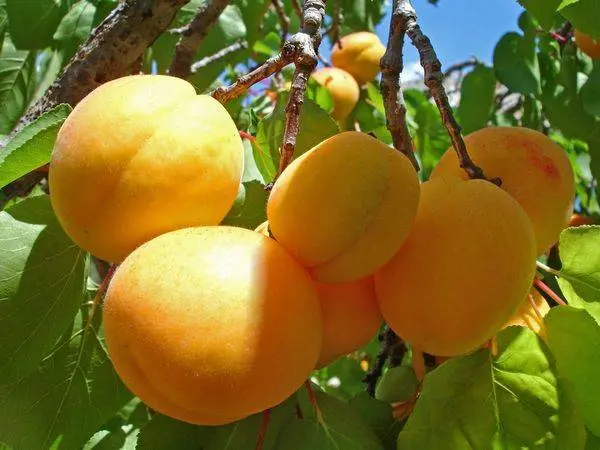
Description of the culture
Apricot Lel is not a sprawling tree 3 m high. From afar, a photo of an apricot tree Lel resembles a mushroom. Thanks to this structure, it is easier for gardeners to care for the plant and harvest. Leaves in the form of a tapering ellipse are medium in size, with serrated edges. From above, the leaf plates are smooth, and from below they are covered with a short white fluff. In autumn, when the trees prepare for hibernation, the color of the leaves changes from green to shades of red.
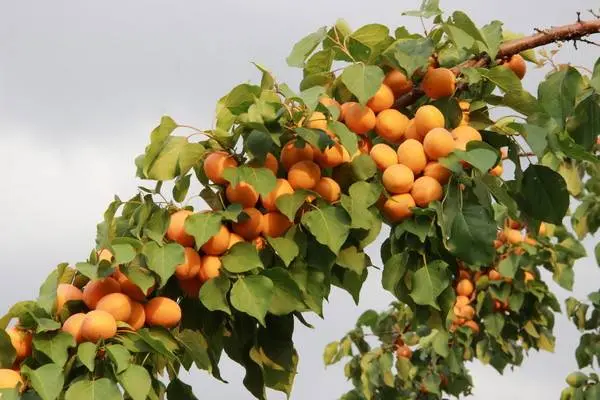
The flowers are light pink, 3 cm in diameter, emit a delicate, pleasant aroma. Fruits weighing 20 g, flattened on the sides, covered with a smooth thin skin. Due to the unique combination of sugars and acids, apricots have a pleasant taste, tender flesh and a rich apricot smell. The large bone is not attached to the pulp.
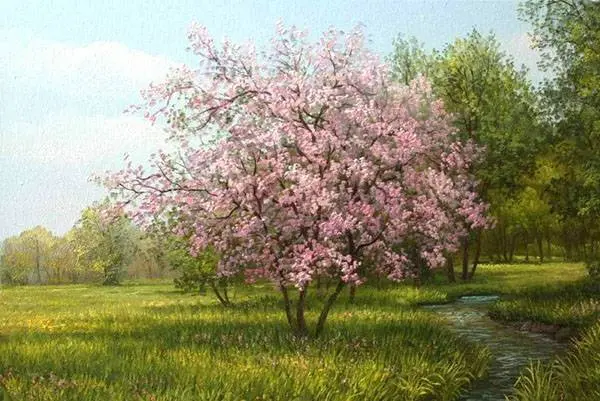
The State Register recommends apricot Lel for cultivation in the central regions. However, in practice, this type of apricot, provided good shelter, grows in some northern regions.
Features
When choosing a fruit tree, you need to carefully study all the features of the variety. The characteristic of apricot Lel includes such sub-items.
Drought resistance, winter hardiness
Fruit heat-loving tree tolerates the longest droughts without problems. A distinctive feature of the variety and resistance to cold. So, even young trees, subject to proper shelter, tolerate frosts up to 300C. Apricots are not afraid of return frosts at -1 … -30C. Due to this feature, the Lel apricot in Siberia is one of the few types of heat-loving trees that bear fruit annually.
Pollination, flowering period and ripening period
The self-fertility of the Lel apricot is the main highlight of the heat-loving culture. Fruit tree flowers consist of a pollen-covered stamen and pistil, which allows the crop to self-pollinate.
At the same time, there are flowers on the apricot that require cross-pollination. To get the maximum yield on the site, you need to plant 2-3 fruit trees. The best pollinators of the apricot Lel are the variety Aquarius, Alyosha. If there is no free space for so many trees, one can be planted, but the yield will be less. Pollination of apricot Lel depends little on bees and bumblebees, since insects are still inactive during flowering.
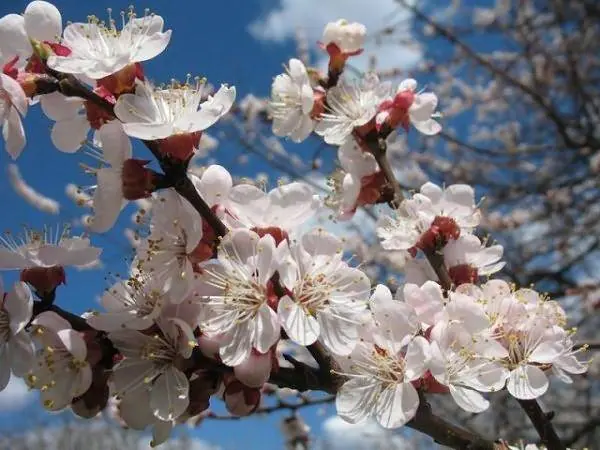
Apricot Lel belongs to the group of early varieties. Despite the rapid vegetation, frosts during the flowering period are extremely rare, which allows the gardener to collect generous harvests of apricots every year, even in the northern part of the country. Depending on the climate of the growing region, the ripening period of the Lel apricot falls in the second or third decade of July.
yield, fruiting
The tree brings the first harvest 3-4 years after grafting or planting in a permanent place. The fruits are tied both on single flowers and on flowers collected in a bouquet. A photo of an apricot Lel during the flowering period is simply mesmerizing with its beauty.

Scope of fruits
Apricots of the Lel variety are universal: the fruits are consumed fresh, they are made into jam, compote is boiled, dried. Regardless of the processing method, fruits have a dense pulp, a pronounced smell and color. The description of the Lel apricot contains information that fruits with a rich content of nutrients can be used to make mashed potatoes for complementary foods.
Disease and pest resistance
The Lel variety has an average immunity to clasterosporia blight, is practically not attacked by aphids – only 1% of the trees suffer from an insect attack. Since the resistance to most diseases is average, the cultivation of the Lel apricot variety is successful only under the condition of systematic treatments with the appropriate preparations.
Advantages and disadvantages
It is these factors that are paid attention to when choosing a variety of fruit tree. The advantages of the Lel apricot variety are:
- Frost resistance
- Early maturity.
- Compactness.
- Good keeping quality.
- High palatability.

The disadvantages of a fruit tree include:
- Small fruit size.
- Large bone – 10-12% of the size of the fetus.
- Average yield.
Features of landing
Planting an apricot Lel is very similar to planting any other fruit tree, but it has several features that need to be taken into account so that the tree grows quickly and pleases with a bountiful harvest.
Recommended dates
In the central regions, apricots are planted in early spring, when sap flow has begun. The optimum temperature for planting apricot at night is + 10 … + 120C. By winter, the seedling forms a powerful root system and tolerates it well.
Autumn planting is possible only if at least 2 months remain before the onset of stable cold weather. And since the weather has recently been surprising with surprises, it is far from always possible to accurately determine the appropriate time for planting, which is fraught with a deterioration in the condition of the seedlings and their death.
Choosing the right place
For planting a heat-loving tree, sunny areas protected from drafts and the north wind are suitable. Apricot grows best in light, well-drained soils. Chernozem, sandy loamy, loamy soils are ideal as a comfortable living environment.
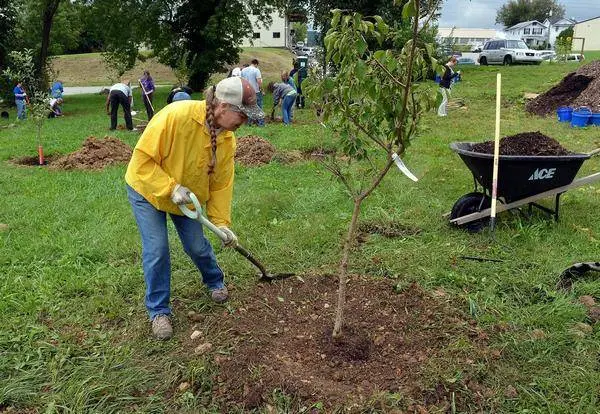
Planting apricots on sandy or clay soils is not recommended. In the first case, the tree is subject to burns and aging, and in the second – to disease. If there is no corresponding place, you can create it manually. To do this, an embankment 2 cm high is made on the free 70 m of land, and then a seedling is planted on the south side.
What crops can and cannot be planted next to an apricot
The southern tree does not like to share territory with other plants, so it is better to plant it in a separate area. It is especially not recommended to plant an apricot next to an apple tree, plum, pear, cherry, walnut, peach and cherry. Among the shrubs near the fruit tree, you can not plant currants and raspberries.
Selection and preparation of planting material
In order for the laudatory reviews about the Lel apricot to turn out to be true, the first thing to do after deciding to acquire apricot trees is to find a trusted seller. As a rule, the probability of buying a bad seedling in local nurseries is much lower than from a visiting reseller.
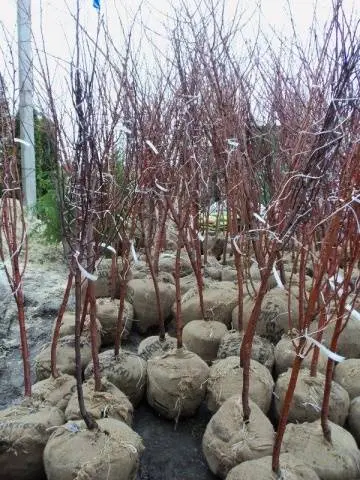
For planting, you should choose one or two-year-old trees with a powerful root system, the processes of which are painted white or cream on the cut. The bark should be smooth, elastic: peeling, spots and rot are signs of serious diseases that prevent the tree from developing normally. In good planting material, the wood is painted light green.
Landing algorithm
For the landing to be successful, all actions must be performed according to a clearly established plan. The scheme of garden manipulation is as follows:
- Landing hole preparation. In autumn or spring (3 weeks before planting), a hole is dug 70 cm deep in the selected area. Then a layer of drainage material is laid and covered with a mixture of fertile soil and 1,5-2 buckets of humus. Fall asleep 1 liter of ash or complex fertilizers with a high content of phosphorus and potassium.
- The seedling is soaked for a day in an industrial or biogrowth stimulator, and then the rhizome is examined and damaged or diseased shoots are removed. The length of the roots is shortened by 2-3 cm.
- The measles system is dipped in a container with a thick clay mash and allowed to dry.
- Stepping back a little from the center of the embankment, a peg is driven in, the length of which is 20 cm longer than the length of the apricot.
- The tree is set in a hole, the roots are straightened to the sides and covered with earth. The root neck should be 5 cm above the soil level.
- The soil is lightly compacted and watered abundantly. A little later, when the earth dries out, the trunk circle is mulched.
- On the sunny side, a protective screen is placed for 2-3 days.
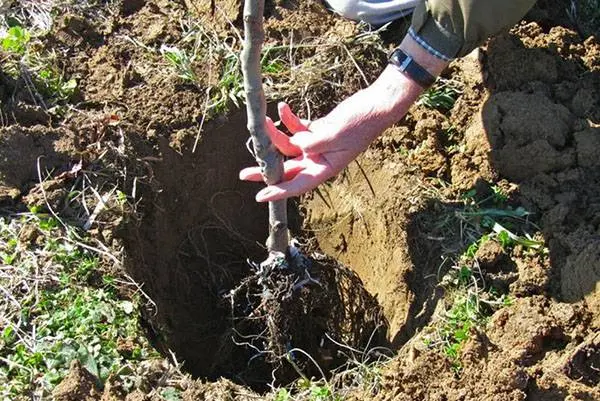
Culture aftercare
In order for a tree to show its inherent potential, a gardener needs to systematically perform a series of garden manipulations. Apricot care includes:
- Watering. Water is introduced in large portions into the recess around the trunk as the soil dries up.
- Top dressing. In spring, apricots are fed with organic matter, and in summer – with complex mineral fertilizers.
- Pruning. In the spring, excess, damaged and diseased branches are removed from the crown.
- Loosening and mulching.
Diseases and pests, control and prevention measures
Growing apricot Lel in the Moscow region is impossible without regular spraying, because due to changeable weather and geographical location, seedlings suffer from microorganisms and insects.
Apricot suffers from moniliosis, bacterial and perforated spotting, Vals fungus, verticillosis, gum disease. To prevent the development of pathogenic microorganisms and cure already diseased specimens, trees are sprayed with copper-containing preparations: Bordeaux mixture, Horus, Mikosan.
Insecticide treatment or planting medicinal and spicy herbs with a strong odor next to seedlings will help protect the culture from leafworms, codlings and aphids. These include thyme, dill, marigold, lavender, calendula.
Conclusion
Apricot Lel is an early variety resistant to adverse conditions with excellent taste. Planting and caring for the Lel apricot is extremely simple and does not take much time, which allows you to grow a tree and very busy summer residents.
Reviews
Reviews about the Lel apricot in the Moscow region are preferably positive. Here is some of them:
You can see that the reviews of gardeners about the Lel apricot fully confirm the declared characteristic, which dispels all doubts about its veracity.










